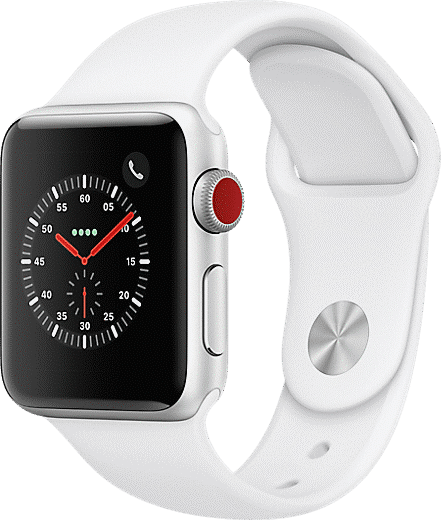
![]() “Wearables Wars” is AR Insider’s mini-series that examines how today’s wearables will pave the way and prime consumer markets for AR glasses. Each installment will profile a different tech leader’s moves and motivations in wearables. For more, subscribe to ARtillery PRO.
“Wearables Wars” is AR Insider’s mini-series that examines how today’s wearables will pave the way and prime consumer markets for AR glasses. Each installment will profile a different tech leader’s moves and motivations in wearables. For more, subscribe to ARtillery PRO.
The wearables sector is approaching an inflection point. Though not a new tech category, activity levels are escalating per several signals we’re tracking. This should accelerate AR, given that its endpoints are headworn, and by generally acclimating consumers to wearing tech on their bodies.
But before going into the AR implications, let’s step back and look at the activity in the broader wearables sector. Wearables sales this year are projected to hit $41 billion, up 28 percent from $32 billion last year. Responding to that growth is a blitz of market activity and product launches.
Apple is already far ahead given the success of Watch and Airpods. Google meanwhile acquired Fitbit to buttress its wearables play. Amazon and Microsoft launched wearables lines in the past quarter and smaller players like Bose and Snap are planting seeds for a wearables-heavy future.

Follow the Money
There’s an underlying driver for this activity that goes back to our favorite pastime of “following the money.” This is all about extrapolating product roadmaps based on tech giants’ motivations. This is often to future-proof their core businesses or diversify revenue in the face of maturing products.
The poster child here is Apple. As we’ve examined, it’s leaning into wearables as a near-term diversification play and long-term succession plan. Both vectors are compelled by the fact that the iPhone (and smartphones in general) are reaching market saturation and declining growth.
This sense of motivation and urgency for wearables was quantified further in Apple’s Q4 earnings. iPhone sales were down 9 percent YoY to $33.36 billion while wearables were up 54 percent to $6.52 billion. This is similar to where the iPhone once sat relative to maturing Mac sales.
Google meanwhile acquired Fitbit to accelerate its lingering WearOS platform with some hardware in the game. Its motivation, beyond wearables’ rising tide, is the same that drove Android: to maintain a direct touchpoint with consumers in order to drive its core search business.
The Field
Speaking of direct consumer touchpoint, Amazon blitzed the wearables market last month as a delivery system for Alexa. Its Echo Buds are AirPod-like Bluetooth earpieces; Echo Frames are Bose Frames-like audio glasses. And Echo loop is an odd little ring with a mic and speaker.
Its motivation? When Amazon failed to market the Fire Phone, it lost a consumer touchpoint, thus ceding years of pole position to Google and Apple. It now sees smartphone and wearables trendlines on intersecting paths, and wants to redeem that mistake for the next era of hardware.
The situation is similar with Microsoft. Its Windows Mobile OS licensing model quickly lost share to Android’s more compelling price tag (free) last decade. It thus missed out on that coveted position in the mobile revolution, which it now wants to redeem with a more vertically-integrated approach.
That can be seen in Surface laptops (a vessel for Windows and Office products), as well as the category-leading Hololens. More recently, Microsoft exhibited this hardware-forward approach with its Surface Earbuds which have native integration with MS Office productivity functions.

Long Tail
Of course, the trend stretches beyond the big five (and let’s not forget Facebook). Samsung has its own wearables play. And the strength of the category will attract commodity hardware players to fill gaps at the lower end of the market, thus scaling up global access and adoption.
We’ll also see specialty players at the high end, such as Bose. It’s leaning into a hearables strategy with its BoseAR platform. In addition to a strong brand, it’s the only player yet to open up a developer platform to scale up the creation of intelligent and sensor-informed audio experiences.
Snapchat is another dark horse in wearables. Its advantages include high engagement, product focus and it’s not afraid to experiment with hardware in the wild. It’s zeroing in on elegant UX with Spectacles 3, pursuant to feeling out and advancing consumer comfort levels for camera glasses.
In the spirit of Charlie Fink’s Convergence, AR will be formulated and accelerated by myriad forces. That includes 5G (connectivity) and self-driving cars (computer vision). Wearables could contribute to the cause by warming up mainstream users to wearing technology on their faces.
For deeper XR data and intelligence, join ARtillery PRO and subscribe to the free AR Insider Weekly newsletter.
Disclosure: AR Insider has no financial stake in the companies mentioned in this post, nor received payment for its production. Disclosure and ethics policy can be seen here.
Header image credit: Walt Disney Pictures, YouTube
